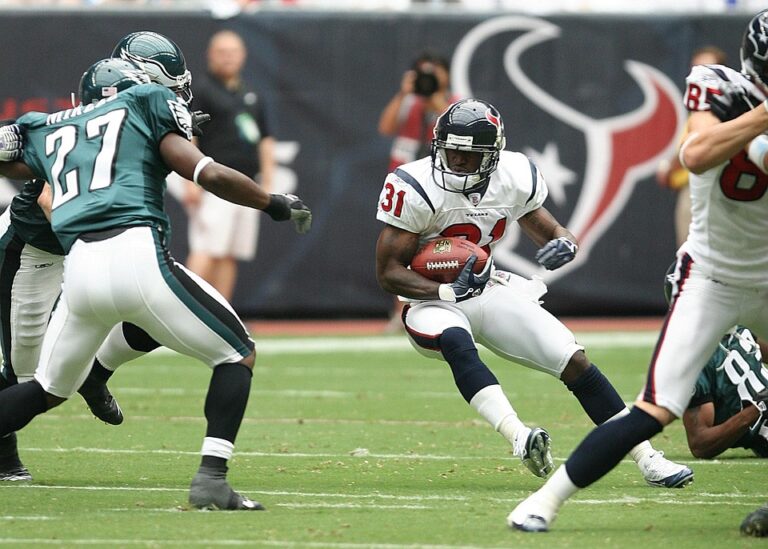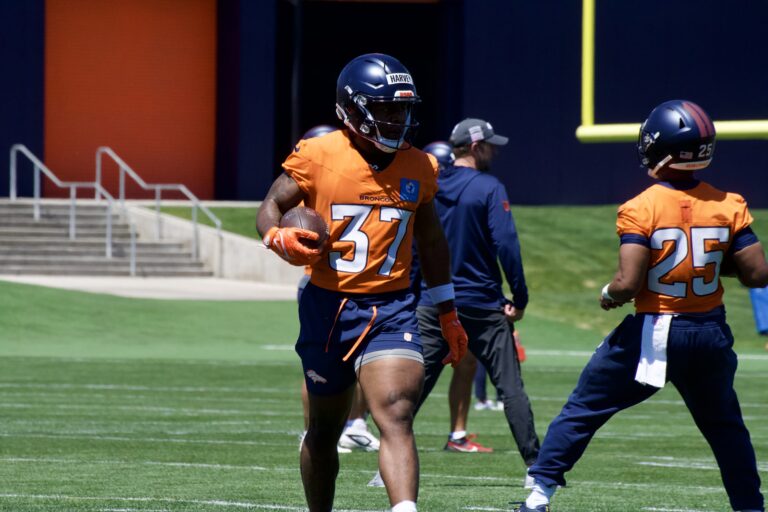As the calendar turns from summer to fall, life has certainties. Your significant other will drag you to the annual apple-picking extravaganza, only to pay 45 dollars for apples (that will go bad in your fridge), Labor Day Weekend parties, and fantasy football preparation. If you’re looking for the latter to become part of your annual end-of-summer/start-of-fall routine, the following article has you covered.
While you could start up a year-round dynasty league, these points will walk you through everything you need to know about starting a standard redraft fantasy football league for you and your group of friends. Grab a pen, and let’s dive in.
WHERE DO I PLAY FANTASY FOOTBALL?
The most popular hosts for fantasy football are Yahoo!, ESPN, Sleeper, NFL.com, and Fleaflicker. By leveraging their websites, or more commonly right on your phone via their app, you can set up a league in a matter of seconds.
Yahoo! is the most common redraft (what we are talking about now) site, Sleeper is the best platform for dynasty leagues, and Underdog Fantasy is the king of the Best Ball format (which we will explain another time).
LEAGUE SETUP AND RULES
LEAGUE SIZE
The most basic question for any fantasy football league. How many friends do you have that want to play? Leagues can start with as few as eight teams (equivalent to playing on rookie difficulty in Madden), and up to 14 teams, where one injury can derail your entire season.
Personally, I think the sweet spot is right in the middle at 12 teams. This provides decent competition, while at the same time not ruining the next three months if your first-round pick goes down in Week 1. Using 12 teams also leaves some meat left on waivers (we’ll get to that later) to plug holes in your roster as the season moves on. If you like points and stacked teams, then a 10-team league is for you.
Once you have a headcount, it’s time to decide what type of league you want to start.
LEAGUE SCORING
At its core, fantasy football is about yards and touchdowns. In its most basic form, our suggested scoring is as follows:
- 10 rushing or receiving yards: 1 point
- 25 passing yards: 1 point
- Rushing or receiving touchdown: 6 points
- Passing touchdown: 4 points
- Reception: half point (or half point PPR)
As you can see, the scoring is straightforward. Just like in the real NFL, yards and touchdowns are key to winning each week. Fantasy is no different. Score touchdowns, don’t turn the ball over (interceptions and fumbles are also usually -2 points each) and you usually come out victorious over your opponent.
It may not seem like much, but choosing the proper reception result is vital. There is Standard Scoring, Half PPR, and PPR. For Standard Scoring leagues (dinosaurs and boomers), a reception is not rewarded with any additional points. In PPR, the pass-catcher is given a full point (1) for catching the football. In Half PPR, the pass-catcher is awarded a half point (.5) for a reception. We suggest half PPR and base our rankings on this scoring.
In redraft and dynasty leagues, only the players you lock into your starting lineup will accrue points toward your team’s total for the week. If Skyy Moore has five receptions for 120 yards and 2 touchdowns, but he’s on your bench, then you do not get his points added to your matchup total.
Thus, be sure to follow the weekly injury report, inactive list, and weather reports leading up to kickoff to help you field the best starting lineup possible. Or, simply tune into the Roto Street Journal YouTube Channel, where we break down the news and give you sit-start tips prior to kickoff every Thursday and Sunday. These decisions are part of the ‘skill’ aspect of fantasy football on a weekly basis.
LINEUP SETTINGS
Once your scoring system is finalized, the commissioner will have to decide on the lineup settings. The default for most sites is 1 QB, 2 RB, 2 WR, 1 TE, 1 Flex (this can be either a RB, WR, or TE), 1 K, and 1 DST (defense/special teams). If you want more scoring, add another Flex and/or WR option.
There are also leagues known as SuperFlex, where a QB is eligible for the Flex spot, but that strategy opens up a whole other can of worms. There are also Keeper Leagues, where each team owner determines a specified number of players to keep for the following season. Or, if you’re into a long-term format, a dynasty league carries your entire roster over year-to-year with yearly rookie drafts, similar to the actual NFL.
For simplicity, we will stick with a single-season, redraft setup for this walkthrough. It may not sound like much, but the specific league settings that are ultimately chosen can make a significant impact on your draft strategy.
DRAFT SETTINGS
SNAKE DRAFT
After the scoring and lineup settings are confirmed, it’s time to prepare for the draft. There are a few different methods of drafting that can be utilized, but the most common is via a ‘snake draft.’
Each team selects a player one after another. When it reaches the last team, that team begins the next round of selections by choosing two players in a row; i.e. picks 12 (1.12) and 13 (2.01) in a 12-team league. This approach helps spread the top-end talent around the entire league and keeps the last pick from having the worst roster by default. Check our 2023 draft order determination guide for creative ways to determine the draft order, especially if you are playing with close friends.
AUCTION DRAFT (SALARY CAP)
The other main draft method is an Auction Draft or Salary Cap Draft. This is exactly what the title implies. Each team has a starting budget, and one by one players are nominated for bid by the entire league. Do you want to have Justin Jefferson and Christian McCaffery on your squad? You can do it. Just be prepared to empty most of your budget to do so. There is no right or wrong way to build a team via the auction process, but we do have an Auction Domination guide to help you strategize along the way.
FREE AGENT SETTINGS
During the season, your roster will need to plug holes and fill gaps due to bye weeks, injuries, and suspensions. All players that go undrafted will become free agents and those players are available for anyone to add without a cost.
Then, from game time on Sunday through Tuesday night, these players are locked and there is a Waiver Wire process. There are a few different ways to determine this process.
WAIVER PRIORITY
First, is the waiver priority system. This typically takes the team that is in last place and places them at the first waiver position and the team with the best record has the final pick of the litter. The win-loss record decides this on a weekly basis.
Having the top waiver claim is a nice perk, as it allows the manager with the weakest team to improve his squad. Any other team can put in a claim for this player, but cannot obtain the player unless he’s available at that priority spot. Once the claim is fulfilled, that manager moves to the back of the line. This follows suit throughout the season.
FAAB (FREE AGENT ACQUISITION BUDGET)
Similarly to the Auction Draft, this free agent system places the available players up for the highest bid during the weekly waiver period. Each team is allotted a set amount of FAAB dollars to spend for the entire season. If a manager decides to go all-in in Week 2, then that manager will be unable to bid on another player for the remainder of the season and will have to wait until all players are available on Wednesday morning. Compared to Waiver Priority, this takes some real strategy because of the potential consequences of misjudging the long-term success of a one-week wonder.
ENTRY FEES, PRIZES & PUNISHMENTS
On to the real reason we play fantasy football. The bragging rights and prizes for achieving the ultimate glory, winning the Fantasy Championship.
When setting up your league, the commissioner will want to clearly state the entry fee (if there is one) and the final payout structure at the end of the season. Whether the commissioner decides to collect before the draft or give some time to the managers, having a method to track league dues is important. Either way, iron out these points before a single snap is played.
On the flip side, it’s always fun to find a way to embarrass or punish the last-place team. From public displays, to “I Suck at Fantasy Football” merchandise, it’s all fair game. Sometimes not finishing last, but being part of the league to partake in the punishment means more than taking home the gold.
In the end, fantasy football is supposed to be fun. It’s a game that anyone can play, and with some dumb luck, even win their respective league! Add twists and custom scoring rules to mold it to your core group of friends. In the end, follow us we’ll give you a leg up on your league and improve your odds of victory come late December. Happy drafting!































